Name Marco Basaiti | Died 1530 | |
 | ||
Artwork Portrait of a Gentleman, Madonna Adoring the Child | ||
Marco basaiti corretto marco basaiti corregido
Marco Basaiti (c. 1470-1530) was a renaissance painter who worked mainly in Venice and was a contemporary of Giovanni Bellini and Cima da Conegliano. He has been referred to by several names including Marco Baxaiti, Marcus Basitus, and Marcus Baxiti. Originally Vasari believed there were two artist from Venice at the time, one name Marco Basarini and Marco Basaiti but later information reveals that these two were in fact the same painter. Not much is known about Marco Basaiti's personal life. There is little documentation on Marco Basaiti besides his painting signatures and when he was recorded on a guild's ledger as a painter of figures in 1530. Most of what is known about Marco Basaiti comes from examining the paintings attributed to him and the period in which he lived.
Contents
- Marco basaiti corretto marco basaiti corregido
- marco basaiti 1470 1530
- Personal Life Training and Influence
- Early Period 1495 1510
- Middle Period 1510 1520
- Late Period 1520 1530
- Artwork
- References
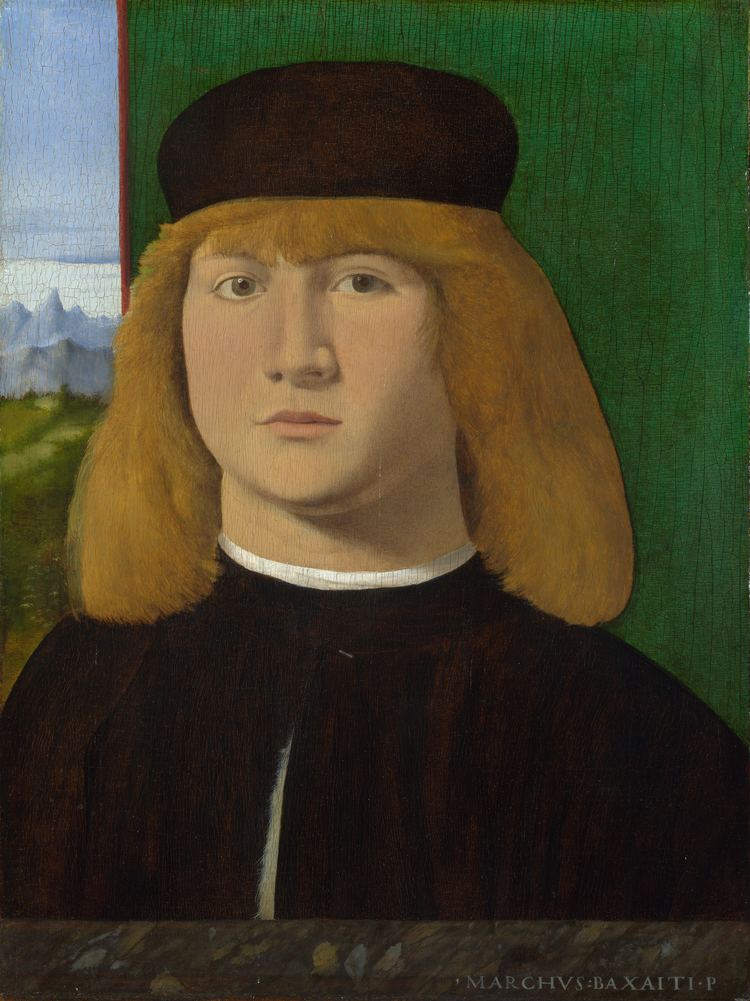
His works consisted of mainly portraits and often focused on religious themes. In fact, there is no known painting attributed to Marco Basaiti with a mythological theme. Although trained in the quattrocento style, Basaiti's career occurs right at the beginning of the cinquecento style which forces him to attempt to adapt his style to compete with the rapidly changing times.
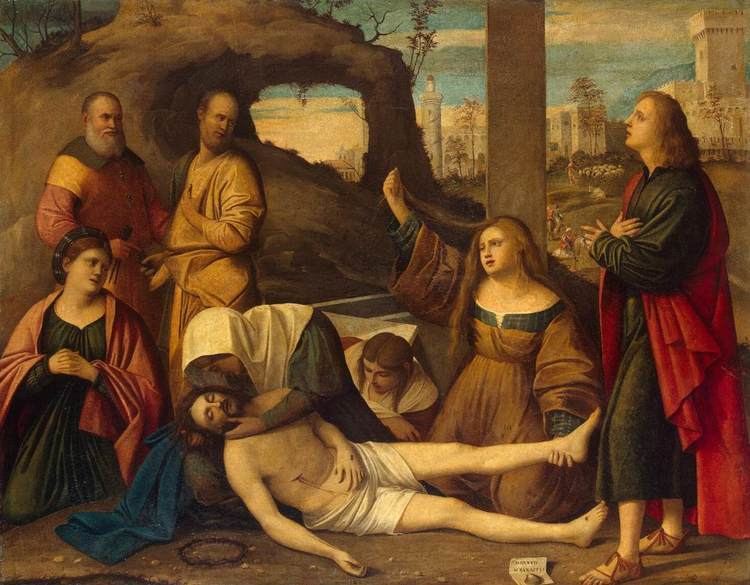
marco basaiti 1470 1530
Personal Life, Training, and Influence

Marco Basaiti was born around 1470, in either Venice or Friuli. His family was of either of Albanian or possibly Greek origin, as Vasari reported. In either case this explains the variety of names Basaiti is known by because the Greek and Albanian communities, along with many other foreign communities, for the most part kept to themselves and do not often appear on Venetian records. Due to this distinct lack of documentation, not much is actually known about Basaiti's life, except what little scholars can learn about the artist through his art.

One more piece of evidence we have from Basaiti's life is a will left to his possible family in 1526. However, connection between Basaiti and this will is still somewhat debated.

He began to paint actively from 1496 to 1520. Currently there is evidence that Basaiti trained with Bartolomeo Vivarini as Basaiti's earlier pieces are thought to more reflect Bartolomeo's style and composition. Later Basaiti transitioned to working with Bartolomeo nephew Alvise Vivarini after Bartolomeo death in 1491. However once Bartolomeo died in the late 1590s, it is thought that Basaiti began working with Alvise Vivarini, Bartolomeo's nephew. This is supported by the fact that when Alvise died in 1505, Basaiti was commissioned to finish the altar piece entitled St. Ambrose Enthroned with Saints that Alvise had left uncompleted. Typically only major assistants working in the studio would have been asked to do this type of work which suggests that Basaiti was closely connected to Alvise by this time. Additionally, Basaiti's work seems to be influenced stylistically by both Vivarinis further implying the link between Basaiti and these two masters.
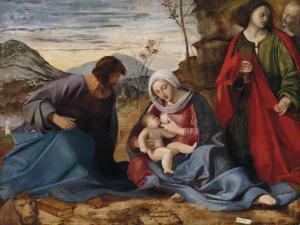
However, Basaiti, as many artists from that time, were influenced by a variety of great artists during that lived during this era. For example, Basaiti began to incorporate more extensive landscapes into his backgrounds which takes queues stylistically from Giovanni Bellini. In fact, some of Bellini’s older works were misattributed to Basaiti for a long period of time. Another likely influence for Basaiti’s more complex backgrounds are Netherlandish painters. Specifically, it has been noted that after Albrecht Durer’s stay in Venice, Basaiti’s style shifted somewhat towards more complex and dramatic landscapes with a less of an emphasis on the figures in the painting. This type of style can be clearly seen in the Lamentation over the Dead Christ and St. Jerome in the Wilderness. Additionally, the painting of St. Jerome in the Wilderness is thought to be a copy of a painting created by Cima da Conegliano which presents yet one more important artistic influence in Marco Basaiti’s life. For the most part Basaiti focused on religious themes rarely delving into mythological or historical topics. Despite this his style seems fairly contemporary with complex composition and correct proportions.
Early Period (1495-1510)
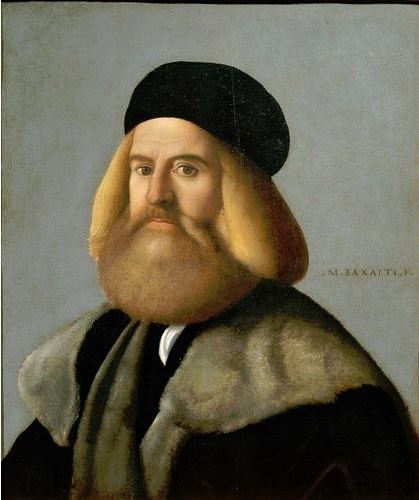
More than half of Basaiti's known works come from this first period in his painting career. This period comes right after his training and is marked by a constantly changing style as Basaiti experiments with his art to find his own personal style. This era is marked by the Portrait of a Young Man (1495) which represents his first finished piece as an independent painter.
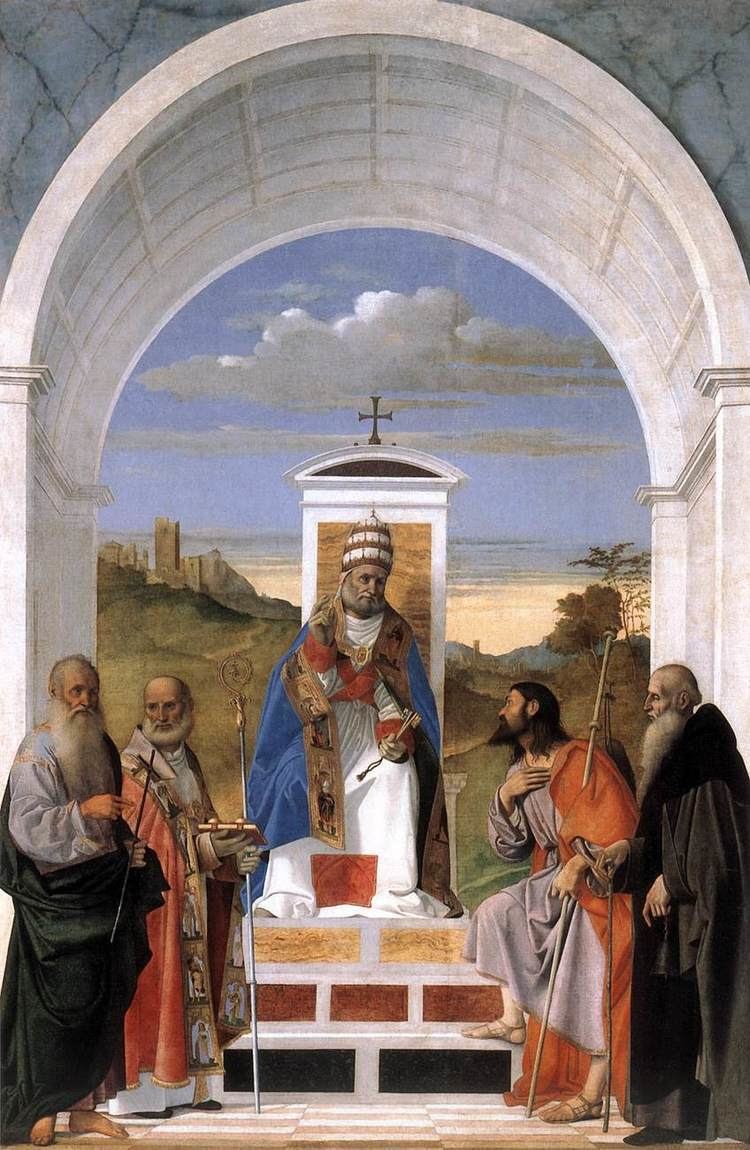
Stylistically there are strong influences from his two proposed mentors in the composition of his paintings, with Bartolomeo specifically influencing his figure design. Some notable features of the Antonellian include strong geometric forms and sharp contrast in lighting. Furthermore, in accordance with the style of his proposed masters, Basaiti’s paintings often consist of brightly colored clothing and cool skin tones. Indeed, Basaiti’s early works are very like some of Alvise’s established disciples such as Jacopo da Valenza which further confirms the link between Basaiti and Alvise.
Around 1500, the influence of the Antonellian school becomes less distinct as Basaiti begins to incorporate more ideas from alternative influences. At this time Basaiti’s backgrounds become more developed demonstrating the influence Giovanni Bellini and Northern artists have on Basaiti. This development can be seen in paintings such as in Portrait of a Young Man (1505), where, in contrast to his first Portrait of a Young Man (1495), the screen behind the figure has been completely removed and the landscape given more importance. In addition to developing a more complex landscape composition, Basaiti appears to become more concerned with spatial consistency after 1500.
Additionally, this change to more expressive landscapes coincided with Albrecht Durer's stay in Venice from 1505-1506. It has been suggested that the landscape style Basaiti adopted is more influenced by Netherlandish paintings than Bellini.
As Basaiti continued to mix the styles of Alvise and Bellini his paintings become comparable to Cima da Conegliano. However, Basaiti arrived at this mix of styles after Cima and he was never able to exert quite the same influence.
Middle Period (1510-1520)
By this time Basaiti's work began to reach a more mature style and this period represents the most cohesive time stylistically for his paintings as his early pieces seemed disjoined due to experimentation early on in his career. Additionally this was one of the most prosperous time for Basaiti and included several large commissions such as the high altarpiece at Sant'Andrea della Certosa, the Call of the Sons of Zebedee. This piece in particular marked the beginning of his mature period and is considered by Vasari and many future critiques to be one of his best pieces. Moving away from portraits which up until now had been his main artistic endeavors, the Calling of the Sons of Zebedee is a narrative painting which requires more complex composition. In fact, the painting features a much more detailed and expansive landscape that was lacking in his earlier works. Additionally the figures within a narrative setting must be place in a more careful fashion in order to bring the painting to life. Although Basaiti tried to compose narrative paintings later on, none were as successful as this first one.
Another notable example of Basaiti’s work with narrative pieces is the Agony of Christ. This represents a large commission as the altarpiece of the Foscari in San Giobbe. This altarpiece is set up next similar pieces by Giovanni Bellini and the influence from Bellini in Basaiti's painting is obvious.
Later, during this period, Basaiti’s paintings became more focused and returned to one figure paintings as intricacies of narrative paintings proved to be too difficult. As seen in the Resurrected Christ and the Blessed Redeemer, while many aspects of Basaiti’s former success remain, the painting features only one main figure.
Continuing his emphasis on the use of landscapes in paintings, backgrounds became more integrated into the overall painting but the influence of Bellini and of Netherlandish painters is still apparent. As Basaiti’s own style developed, the lighting in his piece became softer and the components of the painting blended more fluidly into his paintings. This gradually shift towards softer lines and an emphasis on natural lighting was the popular style developing during this era.
Basaiti was trained in the quattrocento style which he worked on perfecting during this time but unfortunately this style was declining in popularity. Despite this new style emerging during his later years he attempts to incorporate some of the new techniques being popularized during this time. This transition can be particularly seen in his later works.
Late Period ( 1520- 1530)
This was Basaiti's last period and no paintings have been dated after 1530. Basaiti appears on a ledger for a painters guild in 1530 and then there is no known mention of him after this ledger and he is presumed to have died in the early years of that decade. According to current estimations, this would have made him 60 around the time of his death. In this last decade of his painting career, his composition became slightly more developed and more in tune with the contemporary style but remained heavily influenced by the quattrocento style. During this time he mainly focused on portraits as the delicate interplay between figures in narrative scenes were much more difficult for him. In fact, portraits were the one area where he was able to adapt the most stylistic with the changing times. Additionally during this shift back to portraits landscapes started to decline in importance in his paintings although their presence never quite disappeared completely.
One exception to this trend is the painting the Lamentation which once again demonstrates Basaiti's ability to compose narrative scenes. The Lamentation blends many of the influences throughout Basaiti's life and exhibits Basaiti's progress towards more organic lighting and forms.
Some call Basaiti one of the last masters of the early renaissance and his works demonstrate a refined quattrocento style. However, despite his best efforts, his works are still generally considered to be one step behind the trends of the Venetian painting of that time.
Artwork
There are approximately 30 known pieces currently attributed Basaiti.
The table is ordered by date and those with a range of dates were ordered based on their earliest estimated date. Those with no determined dates were listed last.
